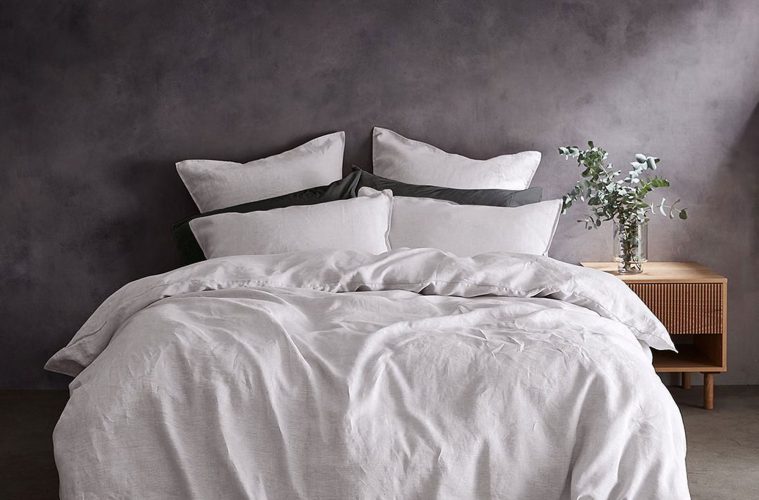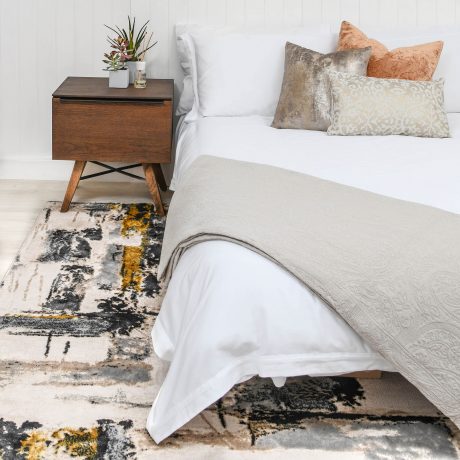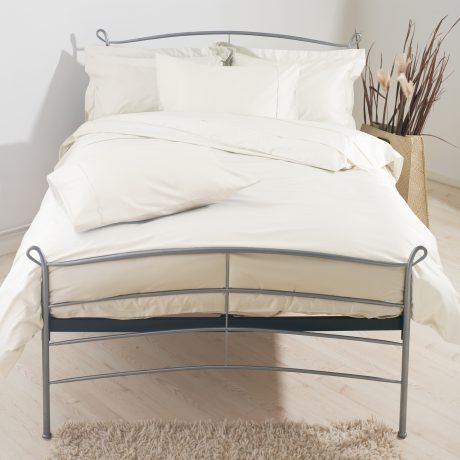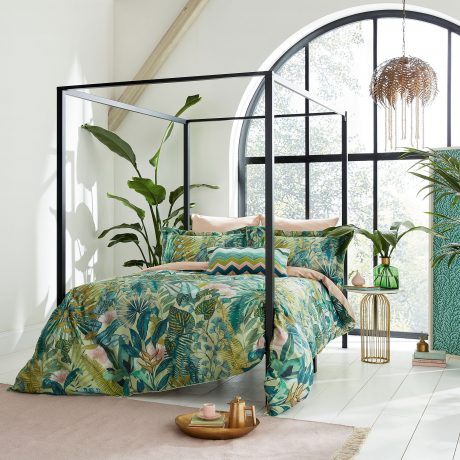Your choice of bedding can ensure that you are warm, comfortable, and cosy at night – or it can leave you tossing and turning when you should be getting a good night’s rest! Knowing how to choose bed linen and bed sheets is essential for ensuring that your entire family can sleep peacefully, regardless of the season or their individual bedding preferences.
In our bedding buying guide, we’ll explore how you can choose the bed linens that best suit your needs and tastes, from picking the right synthetic or natural materials to opting for the ideal sizes and styles. Once you’ve found your ideal bed linen fit, shop our range of premium bedding at Fishpools to find everything you need to transform your bedrooms into the havens you and your family deserve.
What bedding material should I choose?
When it comes to choosing bedding, it’s important to know that bed linens and sheets come in a wide range of materials made from natural and synthetic fibres.
Natural fibres come from plants like cotton and bamboo, or animals like wool. In contrast, synthetic fibres are man-made and come from chemical compounds that are made using a chemical process. You’ll also find synthetic-natural fibre mixes that combine the two, for example polycotton.
Each material offers different pros and cons, levels of comfort and warmth, longevity, and other factors that may influence your decisions.
The fine bedding offered at Fishpools comes in a range of materials:
- 100% cotton. Cotton is a classic choice for bedding as it is soft, durable, natural, and relatively cost-effective considering its quality. Pure cotton is also hyper-allergenic and breathable, making it ideal for those with allergies. If you prefer being cool at night, cotton bedding is a good choice too as the natural fibres are breathable and wick away perspiration, helping you to regulate your body temperature and avoid overheating.
- Cotton and polyester blends. Polycotton bedding combines the best of both worlds: durable, natural cotton, and strong, lightweight polyester. The most popular mix of the two is 65% cotton and 35% polyester. These linens are a more cost-effective alternative to pure cotton or linen bed sheets, while providing a similar luxury look and feel.
- Egyptian cotton. This bedding material is technically 100% pure cotton, but its threads are naturally long, creating a stronger material with a longer lifespan. It’s incredibly smooth and has a softer finish, making it feel extra luxurious.
- Pima cotton. Pima cotton has been genetically engineered to produce softer and more durable fibres. Bedding made from this material is ultra-warm and soft and is renowned for its ‘fluffy’ texture. It’s also incredibly durable and wrinkle resistant.
- Linen. This hotel classic, made from flax fibre, is a popular option that is robust, durable, and offers a unique texture and casual undone look. It offers enhanced breathability and has a lower environmental impact than cotton. Linen is prone to wrinkling, meaning that it requires more maintenance than other bedding types. You should not tumble dry linen, instead, you can lay it flat to dry or hang it up.
- Mulberry silk. There are few things more luxurious than 100% silk bedding. This quality silk is hypoallergenic, natural, and completely odourless, and provides unparalleled breathability and comfort. It’s suitable for all climates as its cool when temperatures rise, and warm and cosy in winter, making it the perfect option to promote a good night’s sleep. Bear in mind that due to its delicate nature, mulberry silk bedding is a better choice for adults than it is for children.
- Polyester. Polyester bedding, also known as microfibre, is cost-effective, durable, and breathable, although not to the same extent as cotton. It is a great choice for colder months, as its synthetic fibres help to trap heat and keep you cosy all night long.
What thread count is best for me?
The thread count refers to the number of threads woven together in a square inch of material. The warp and the weft threads are counted to determine the count. A higher thread count means a denser and stronger fabric, but the quality is based not on the density but on the quality of the thread.
Thread counts can range from 180 to 1000 and will naturally be higher in thicker materials like Egyptian cotton and bamboo.
Fishpools’ bedding comes in a wide range of thread counts, depending on the materials used. Cotton bedding tends to offer a thread count of 200-1000. The best option for you will depend on your budget, your warmth and insulation needs, and your preferred materials.
What bedding size should I choose?
Fishpools linens come in a range of different sizes, including single, small double, double, king, and super king. The easiest way to choose the correct bedding size is to choose according to the size of your bed and duvet. So, if you are shopping for linens for a double bed, you would choose a double-size sheet and a matching duvet cover.
While the size of your sheet should always correspond with that of your mattress, you can opt for a larger size in duvets and duvet covers if you wish. This will provide more room to move and to snuggle up, especially if you sleep with a partner at night.
What style of sheet should I choose?
Are you wondering how to choose bed sheets with so many options available? Here are the different styles of sheet available, and what they are designed to do:
- Deep fitted. Deep fitted sheets are specifically designed to cover deeper mattresses. If you have an extra depth mattress, this is a must-have option.
- Flat sheets. Flat sheets are layered on top of your fitted sheets, providing an extra layer of warmth that you can sleep underneath should you need it.
- Fitted sheets. These elasticised sheets are a popular choice, as they are easy to install and remove. The built-in elastics hold them in place underneath your mattress to ensure that they stay put.
What style and colour bedding should I choose?
Now that you know how to choose bed linen according to material, thread count and size, it’s time to focus on colours and styles. You can get creative with this aspect of your bedding choices, either by opting for bedding that aligns with your existing interior décor style or by shaking things up with contrasting bedding that will be a focal point in your room.
Plain and patterned options are both very popular, and you can choose between them depending on your personal tastes. Many of our bedding options at Fishpools also offer reversible designs – one side printed and one side plain – to make for easy styling whichever way you please.
The trendiest bedding colours currently are soft tones, including neutrals like grey and beige, and gentle, natural shades of green, earthy browns, blue, and terracotta. If you prefer bold tones, navy blue and emerald green are also on-trend this year.
Choosing bedding for children
Bedding for children should be soft, durable, breathable and all-natural. The best choices in materials are pure cotton, Pima cotton, bamboo and linen, all of which are also suitable for children with allergies.
As for the style, we recommend getting your younger family members involved in the decision-making process. Encourage them to browse our range of bedding online with you and to pick out the options that they like best – and those that will work well with their bedrooms’ décor. Colourful designs and unique patterns will help to create a fun ambience in their personal spaces, encouraging creativity, play and fun.
Frequently asked questions
How often should bedding be changed?
Your bedding should be changed and washed at least once a week to keep it hygienically clean. You should aim to replace your bed sheets every two to three years, or when they start to show visible signs of wear and tear.
How do I make my bedding last longer?
One of the best ways to keep your bedding in great condition for longer is to avoid hot water washes, and wash linens only in cold or warm water. Use gentle, colour-safe detergents and air dry your linen if possible, as tumble drying frequently can break down the delicate fibres of the material and lead to premature wear.




